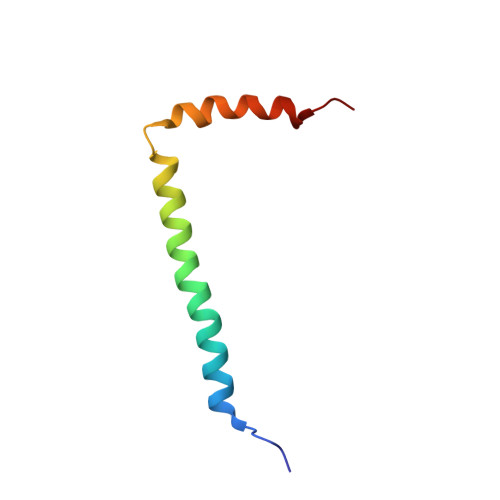HER2 Transmembrane Domain Dimerization Coupled with Self-Association of Membrane-Embedded Cytoplasmic Juxtamembrane Regions.
Bragin, P.E., Mineev, K.S., Bocharova, O.V., Volynsky, P.E., Bocharov, E.V., Arseniev, A.S.(2016) J Mol Biology 428: 52-61
- PubMed: 26585403
- DOI: https://doi.org/10.1016/j.jmb.2015.11.007
- Primary Citation of Related Structures:
2N2A - PubMed Abstract:
Receptor tyrosine kinases of the human epidermal growth factor receptor (HER or ErbB) family transduce biochemical signals across plasma membrane, playing a significant role in vital cellular processes and in various cancers. Inactive HER/ErbB receptors exist in equilibrium between the monomeric and unspecified pre-dimerized states. After ligand binding, the receptors are involved in strong lateral dimerization with proper assembly of their extracellular ligand-binding, single-span transmembrane, and cytoplasmic kinase domains. The dimeric conformation of the HER2 transmembrane domain that is believed to support the cytoplasmic kinase domain configuration corresponding to the receptor active state was previously described in lipid bicelles. Here we used high-resolution NMR spectroscopy in another membrane-mimicking micellar environment and identified an alternative HER2 transmembrane domain dimerization coupled with self-association of membrane-embedded cytoplasmic juxtamembrane region. Such a dimerization mode appears to be capable of effectively inhibiting the receptor kinase activity. This finding refines the molecular mechanism regarding the signal propagation steps from the extracellular to cytoplasmic domains of HER/ErbB receptors.
- Shemyakin-Ovchinnikov Institute of Bioorganic Chemistry, Russian Academy of Sciences, 16/10 Miklukho-Maklaya Street, Moscow 117997, Russian Federation; Lomonosov Moscow State University, Leninskie Gory, 1, Moscow 119991, Russian Federation.
Organizational Affiliation:
















